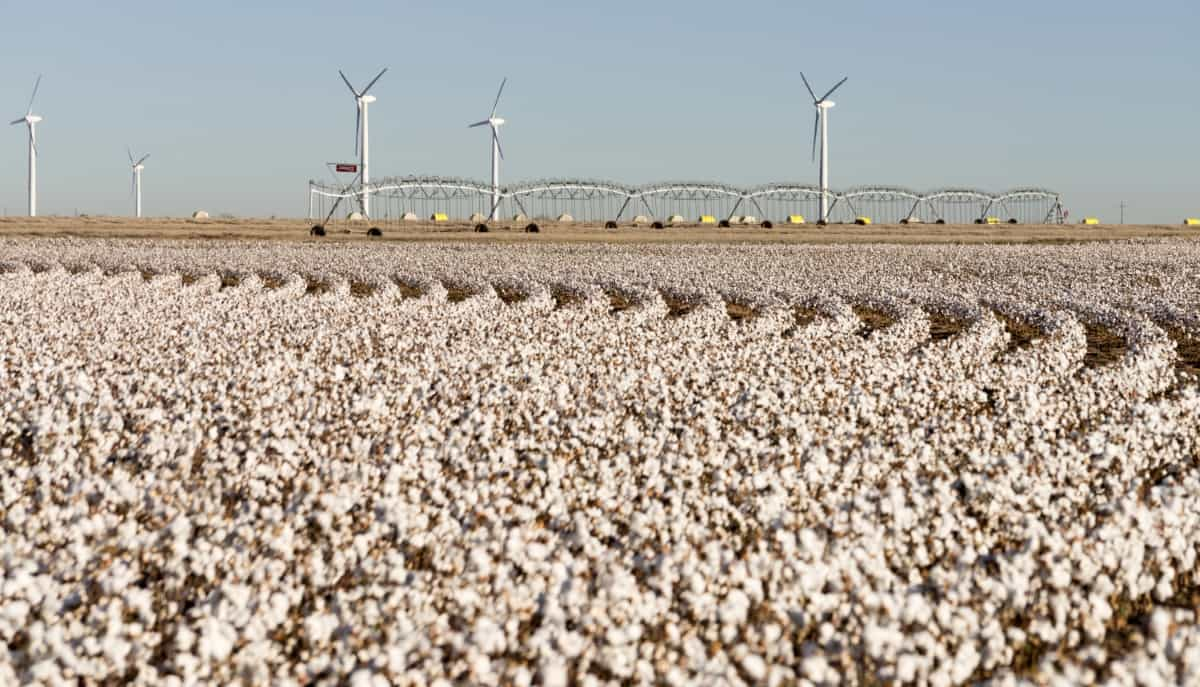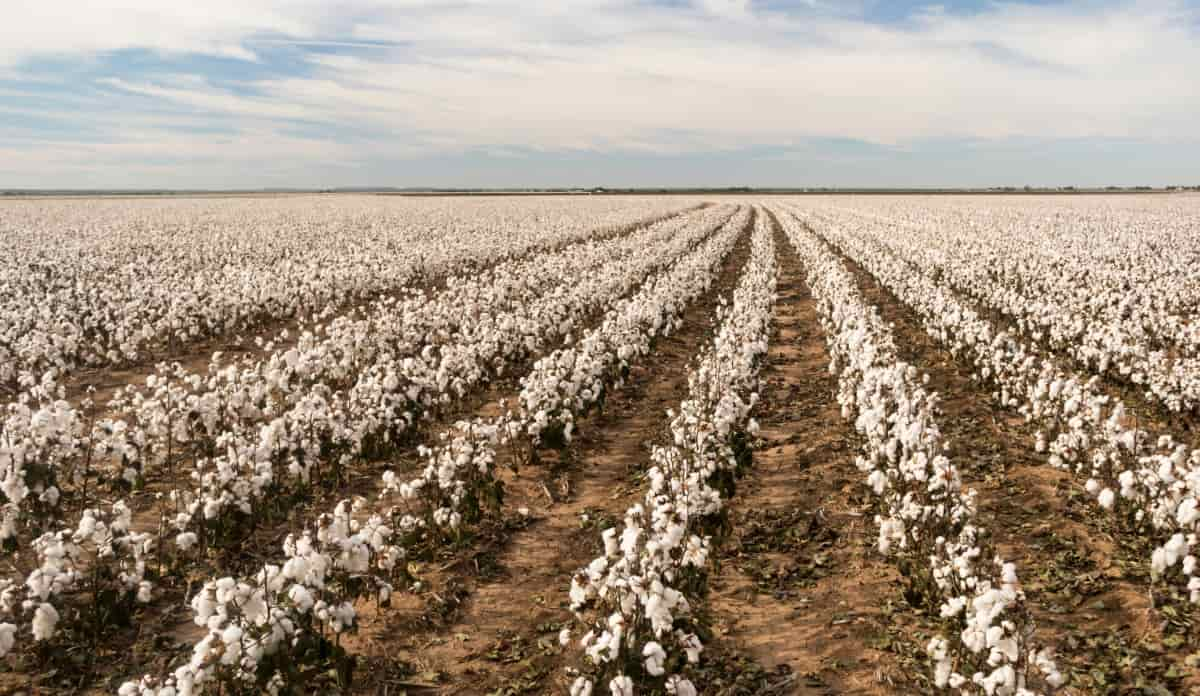Organic cotton is gaining popularity in the global textile industry for its sustainable and eco-friendly approach. It avoids the use of synthetic chemicals and genetically modified seeds and employs natural processes to cultivate the cotton crop. Here we learn about the best practices for growing organic cotton, focusing on organic cotton fertilizers, techniques used in organic cotton cultivation, and the ideal climate conditions for the growth of cotton.

How to Grow Organic Cotton
Soil Preparation
To ensure a healthy organic cotton crop, it is essential to prepare the soil properly. Start by choosing well-drained, fertile soil with a pH between 6 and 8. Conduct a soil test to determine the nutrient levels and any deficiencies that must be addressed. To increase the fertility of the soil and the structure of the soil, add organic materials such as compost. It also aids in the retention of water and nutrients, promoting healthy root growth. Soil preparation should be done several weeks before planting to allow the organic matter to decompose and release nutrients.
Seed Selection
Selecting high-quality, non-genetically modified (non-GMO) seeds is crucial for organic cotton farming. Choose seeds resistant to diseases and pests and well-suited to your region’s climate. Consult local agricultural extension services or research organizations to determine the best seed varieties for your area.
Planting
When soil temperatures are consistently higher than 60 degrees Fahrenheit (15 degrees Celsius) and all risk of frost has gone, this is the best time to plant organic cotton. This typically occurs in late spring. Sow seeds directly into the soil at a depth of 1 to 1.5 inches (2.5 to 3.8 cm) and space them 3 to 4 inches (7.6 to 10.2 cm) apart in rows that are 36 to 48 inches (91.4 to 121.9 cm) apart. Thinning may be necessary after germination to ensure adequate spacing and prevent overcrowding, which can lead to disease and reduced yields.
Organic Cotton Fertilizer
Organic cotton farming relies on natural fertilizers and amendments to provide essential nutrients to the plants. Some common organic fertilizers include compost, manure, bone meal, fish emulsion, and seaweed extract. These fertilizers provide a steady release of nutrients and increase the health of the soil, which helps to support sustainable development.
Before beginning to apply fertilizer, it is essential to get the soil tested in order to identify the necessary quantities of nutrients that should be present. Nitrogen, phosphorus, and potassium are essential macronutrients for cotton growth. Apply a balanced fertilizer during planting and then side-dress with nitrogen after the plants have developed several leaves to support rapid growth and development.
Irrigation
Cotton is a drought-tolerant crop, but it requires adequate water during critical growth stages, such as germination, flowering, and boll development. The total water requirement for a cotton crop ranges between 20 and 40 inches (50 and 100 cm) per growing season, depending on the climate, soil type, and plant variety. Drip irrigation or furrow irrigation methods are recommended for water-efficient and sustainable organic cotton farming.
In case you missed it: Sucking Pest Control in Cotton Crop

Pest Management
Organic cotton farming avoids synthetic pesticides, relying instead on integrated pest management (IPM) techniques to control pests and diseases. Some common IPM strategies include:
- Crop rotation: Rotating cotton with other crops, such as legumes, helps break the life cycle of pests and diseases specific to cotton.
- Intercropping: Planting cotton alongside other crops, such as sunflowers or sorghum, can deter pests by creating a diverse habitat that supports beneficial insects.
- Biological control: Introducing natural predators, such as ladybugs and lacewings, can
- help control pests by preying on them.
- Physical control: Using traps, barriers, or manual removal to manage pests and prevent infestations.
- Cultural practices: Maintaining a healthy and diverse ecosystem by using cover crops, reducing tillage, and providing habitat for beneficial insects to promote a balanced ecosystem that naturally suppresses pests.
- Botanical pesticides: Applying plant-based pesticides, such as neem oil or pyrethrum, as a last resort when pest pressure becomes too high.
Disease Management
- Planting resistant varieties: Select seed varieties that naturally resist common diseases in your region.
- Crop rotation: Rotating cotton with non-host crops can help reduce the incidence of soil-borne diseases.
- Proper irrigation: Avoiding overwatering and using drip or furrow irrigation systems can help minimize the risk of diseases that thrive in wet conditions.
- Timely cultivation: Removing infected plant debris and timely cultivation helps reduce the spread of diseases.
- Monitoring and early detection: Regularly monitoring your crop for signs of disease and taking immediate action when symptoms are observed is crucial for effective disease management.
Weed Management
Weeds compete with cotton plants for nutrients, water, and sunlight, reducing yields and fiber quality. Organic weed control methods include:
- Mechanical control: Using tools such as hoes, cultivators, or mowers to remove or suppress weed growth manually.
- Mulching: Applying organic mulches, such as straw or wood chips, to the soil surface to suppress weed germination and growth.
- Cover cropping: Cover crops, such as legumes or grasses, may help inhibit the development of weeds by outcompeting them for resources. This can be accomplished by planting cover crops.
- Flame weeding: An efficient organic weed management approach involves burning immature weeds using a propane torch, but care must be taken to prevent damage to the cotton plants.
Harvesting
Organic cotton is ready for harvest when the bolls have fully matured and the majority of them have opened, revealing the fluffy cotton fibers. Mechanical harvesters or handpicking can be used to collect the cotton. Handpicking ensures higher-quality cotton, as it is less likely to damage the fibers or mix in debris. However, it is labor-intensive and time-consuming.
Post-Harvest Handling and Storage
After harvest, cleaning the cotton by removing debris, seeds, and other impurities is essential. Cotton gins are often used to separate the fibers from the seeds. Store the cleaned cotton in a dry, well-ventilated area to prevent mold and mildew growth.
In case you missed it: How to Start Cotton Farming in Texas: A Step-By-Step Production Guide for Planting to Harvest

Conclusion
Growing organic cotton requires careful planning and adherence to sustainable and eco-friendly practices. You can cultivate a successful organic cotton crop by selecting high-quality seeds, preparing the soil, using organic fertilizers, implementing integrated pest management techniques, and managing weeds and diseases effectively. Understanding the best climate conditions and irrigation practices further ensures a healthy and productive crop while minimizing the environmental impact of cotton cultivation.
- Feed Your Flock for Less: Top 10 Tips to Save on Chicken Feed
- Ultimate Guide to Ossabaw Island Hog: Breeding, Raising, Diet, and Care
- Hatching Answers: The Top 10 Reasons Your Chickens Aren’t Laying Eggs
- Eggs and Economics: Breaking Down the Cost of Raising Backyard Chickens
- Defend Your Greens: Proven Methods to Keep Iguanas Out of Your Garden
- Ultimate Guide to Cinnamon Queen Chicken: A Comprehensive Guide for Beginners
- Ultimate Guide to California Tan Chicken: Breeding, Raising, Diet, Egg-Production and Care
- Ultimate Guide to Marsh Daisy Chicken: Breeding, Raising, Diet, and Care
- 10 Types of Chicken Farming Businesses You Can Start for Profits